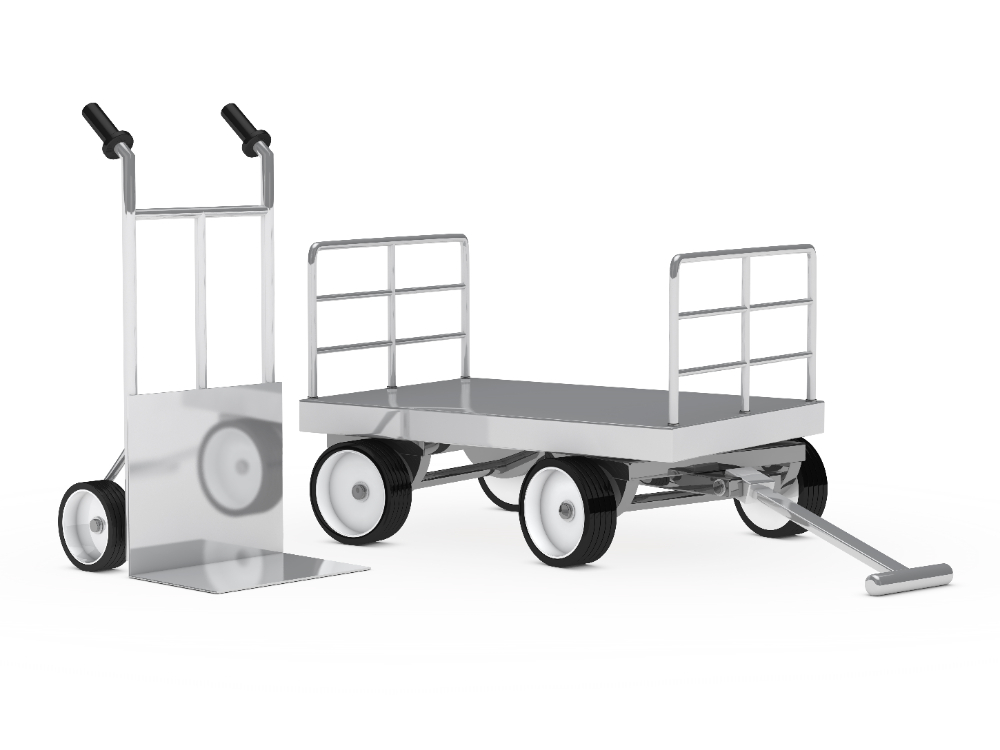
In the fast-paced world of industrial operations, every element that supports mobility, control, and efficiency plays a pivotal role. One such unsung hero in the smooth functioning of industrial spaces is the locking caster wheel. While they might appear simple, these components are crucial in enhancing workflow, reducing risk, and streamlining day-to-day movement of machinery, tools, and equipment. The right locking caster wheel isn’t just about moving objects—it’s about precision, safety, and control.
This article explores how locking caster wheels make a meaningful difference in industrial environments. From warehouse logistics to manufacturing floors, their presence often determines whether a process flows smoothly or halts due to instability or misalignment.
The Role of Caster Wheels in Industry
Caster wheels are commonly installed on everything from tool trolleys and equipment carts to assembly tables and heavy machinery platforms. In any busy industrial setting, mobility is essential—not just to move tools and materials, but also to adapt layouts and operations dynamically. However, unregulated movement, especially in high-load or high-traffic environments, can lead to safety issues, inefficiency, or even equipment damage.
This is where locking caster wheels come into play. By offering the ability to switch between mobile and stationary modes instantly, they bridge the gap between convenience and control.
Precision Control with Locking Mechanisms
Locking caster wheels are designed to secure equipment in place once it reaches its intended position. The locking mechanism can vary in design—from side-lock brakes that clamp the wheel’s rotation to more sophisticated total lock systems that secure both the wheel and the swivel bearing. In either case, the function is the same: ensure that once movement is no longer required, stability takes over.
This simple yet powerful feature allows workers to fix carts or machinery exactly where they need them. For instance, a mobile workbench can be wheeled to a production line and then locked into place to prevent any wobble or drift. This precise control eliminates the need for additional stoppers or manual adjustments, saving valuable time.
Enhanced Safety for Equipment and Personnel
In any industrial facility, safety is paramount. Free-rolling equipment, especially when carrying heavy or delicate loads, poses significant risk. A trolley that slides unexpectedly can damage materials, injure workers, or disrupt coordinated processes.
Locking caster wheels mitigate these risks by anchoring equipment securely. Once locked, there is minimal to no movement, even when the equipment is subject to external force or minor impacts. This makes them particularly useful in environments where workers frequently interact with mobile units, or where equipment must remain aligned with conveyor systems or machinery.
Even on sloped floors or uneven surfaces, locking caster wheels help keep gear in place, eliminating the need for makeshift solutions such as blocks or wedges.
Support for Modular and Flexible Workspaces
Modern industrial facilities increasingly rely on modular layouts. Rather than fixed equipment placement, companies often choose mobile workstations, adjustable racking systems, or reconfigurable assembly lines. This adaptability is vital for industries that handle varying production volumes or customize products frequently.
Locking caster wheels enable this kind of flexibility. Workers can easily roll machinery, racks, or benches to new locations and then secure them instantly, maintaining structural stability without the need for permanent installations.
This capability reduces downtime during layout changes, allows quick adaptation for new workflows, and supports lean manufacturing principles. What once required teams of people to lift and reset equipment can now be done with simple wheel releases and locks.
Durability That Matches Industrial Demands
Industrial environments are tough. Wheels must endure heavy loads, constant movement, exposure to chemicals, temperature changes, and rough handling. High-quality locking caster wheels are specifically engineered to withstand these challenges.
Their materials range from hardened polymers and rubber to high-impact nylon and reinforced metals. The locking mechanisms themselves are designed for repeated use, resisting wear, deformation, or failure over time.
Some caster wheels are further optimized for silent operation, shock absorption, or floor protection, making them suitable for sensitive areas within a facility. Others are designed for specific load capacities, ensuring they don’t just lock, but do so under the weight of industrial machinery or stacked goods.
When sourced from a specialized manufacturer focused on industrial applications, these wheels perform with a level of consistency that supports uninterrupted operations.
Final Thoughts
Though often overlooked, locking caster wheels are among the most valuable components in industrial settings where movement and stability must coexist. Their ability to support heavy loads, endure rough conditions, and offer instant control makes them indispensable in improving workflow and operational safety.
When chosen thoughtfully and integrated into the right equipment, these wheels can dramatically increase the efficiency of processes, reduce risks, and support more agile, responsive work environments. Whether you’re operating a production line, managing warehouse logistics, or maintaining complex systems, the humble locking caster wheel is a powerful ally in building a better, more efficient industrial space.